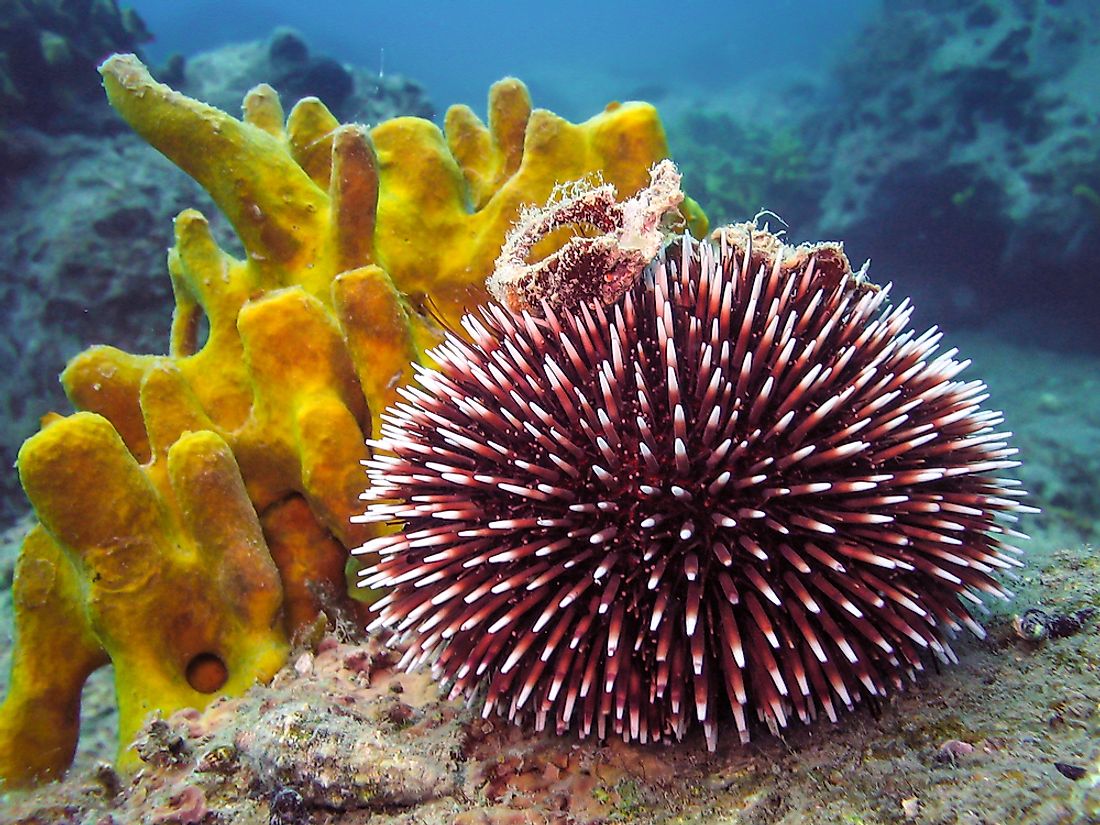Sea Urchin Facts: Animals of the Oceans

Archaically called sea hedgehogs, sea urchins are tiny spiny animals that are broadly characterized as echinoderms. The animals’ shells grow to between 1.2 to 3.9 inches. Sea urchins come in many colors including green, purple, red, purple, and others. Similar to other echinoderms, sea urchins’ bodies show symmetry with tubular structures for movement. The lower half of the body of the urchin contains the mouth and is called the oral surface while the opposite side is the aboral surface. By and large, sea urchins are social animals who prefer to live close to each other.
Habitat and Range
As the name suggests, seas urchins are sea creatures. As such, they are found in almost all of the seas on the planet with a few living in the cold regions of the earth such as the poles. Most species prefer shallow waters. Some species of sea urchins live in shallow or a deep rocky seabed. Sea urchins typically inhabit deep waters only if there is wave action although some species are resistant to the action. The creatures are also found in coral reefs because of the growing algae, which is a delicacy. Some species of sea urchins live close to the shorelines where they are mostly out of the water. An instance of such a species is the shingle urchin.
Diet
Sea urchins are omnivorous. Omnivorous animals feed on both plants and animals. Primarily, sea urchins feed on algae found in corals. Other sea urchin delicacies are mussels, dead fish, barnacles, and sponges. The creatures adapt their diet depending on the habitat that they live. If they are found in places with rich ecosystems, then sea urchins will feed mainly on high energy foods such as algae. Otherwise, they will eat food that gives less energy.
Reproduction
Sea urchin reproduction mostly occurs during the summer season. During this time, the female releases millions of tiny eggs coated in jelly into the water. Some species, however, do not let their eggs float freely in the water. Instead, these species protect their eggs by holding on to them using their spines. Similarly, the males release sperms into the water which meet with the eggs. Fertilization occurs and a swimming embryo forms within half a day after the process, later developing into a corn-shaped larva. For some species, these larvae come equipped with their food sources, in the form of yolk, thus eliminating the need for feeding. For most sea urchin species, though, the larva comes equipped with twelve arm-like structures covered with little hairs (cilia) used for feeding. The cilia serve the purpose of capturing food and taking it to the mouth. The larva usually takes plenty of months to develop fully. After the months are past and the larva is ready to develop fully, it sinks to the bottom. After sinking, it takes around one hour for them to develop into adults. For most species, adulthood is attained after five years.











